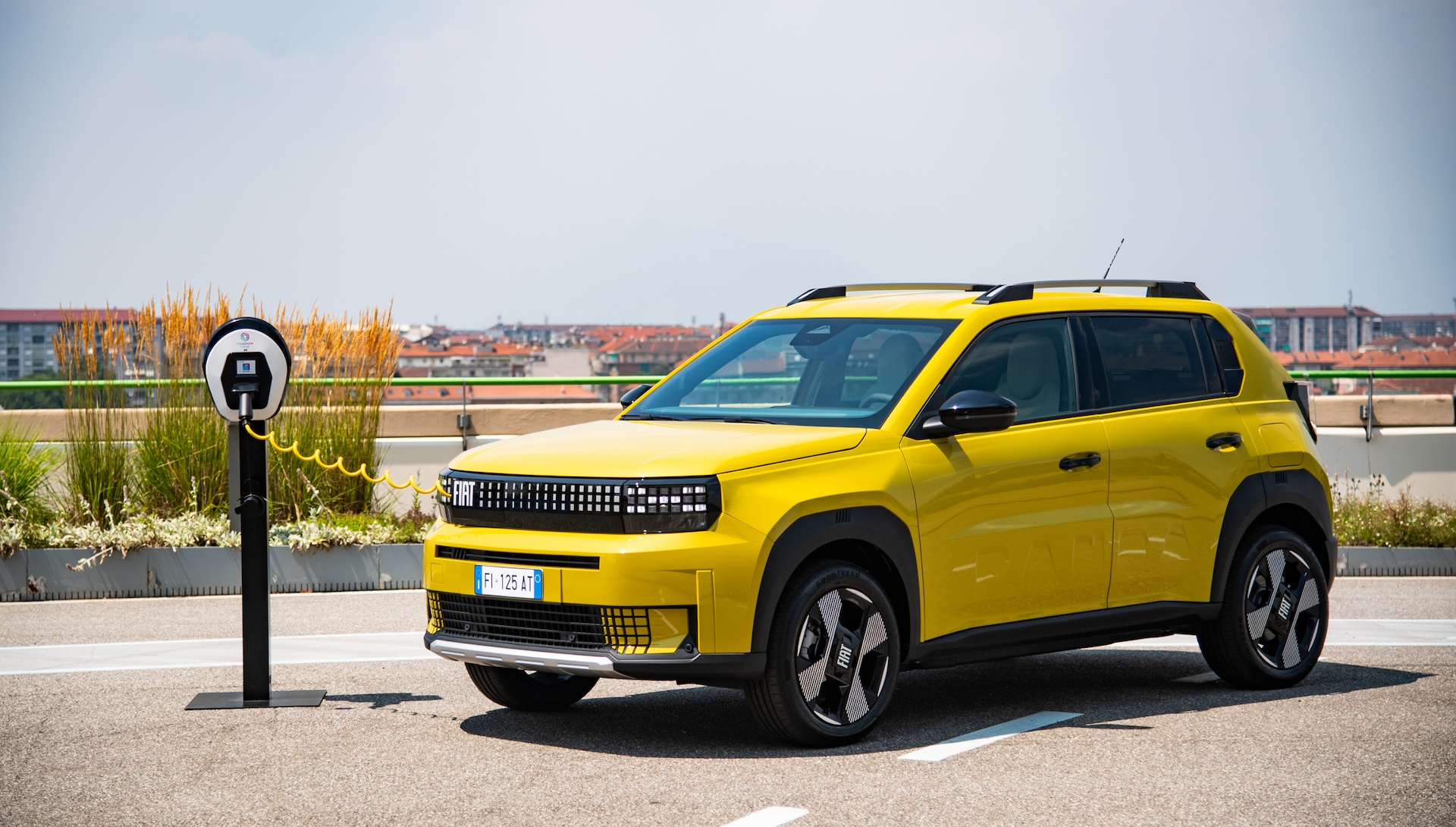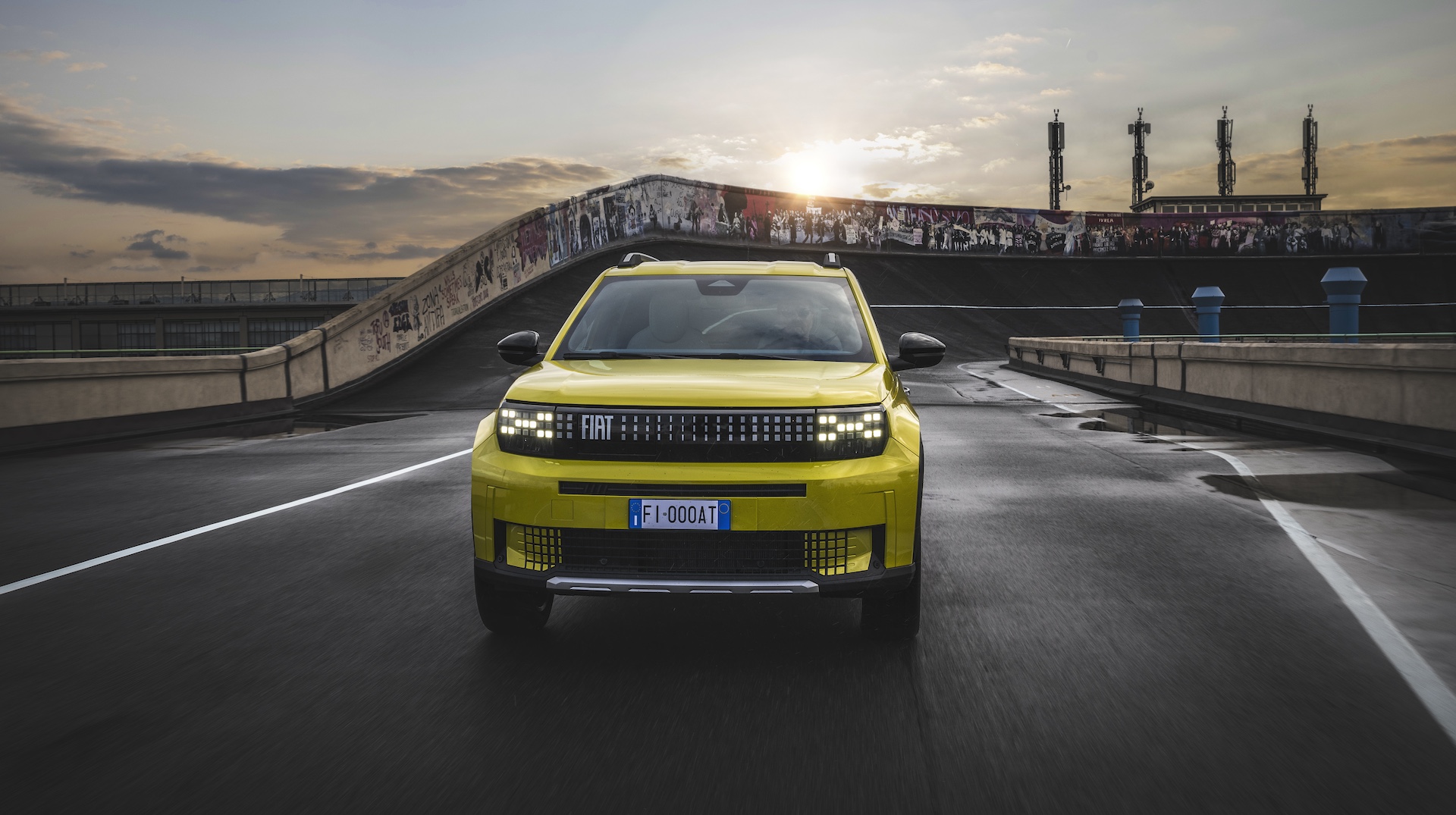Hurrah! Fiat's next EV will be the first with built-in charging cables – and that's a smart idea
No more stuffing heavy charging cables into stowage areas

Not only will the upcoming Fiat Grand Panda be one of the cheapest electric cars when it goes on sale in Europe next year, it will also be the first to offer an integrated charging cable.
Currently, EV owners are forced to spool up their awkward and heavy cables, before attempting to stuff them back into a stowage area, typically below a boot or trunk floor. A right pain if your storage area is already packed with bags and kit.
To make matters worse, these cables will have likely been dragged across the ground and will have picked up all manner of dirt that inevitably works its way onto a fresh white shirt and all over the inside of your vehicle.
A post shared by Autocar (@autocar_official)
A photo posted by on
Fiat's innovative solution, which it slightly excessively describes as "reinventing" charging, is to integrate a coiled cable that retracts into the vehicle’s body work when not in use.
A recent Instagram video from Autocar (above) shows the sprung cable extending from a neatly disguised cubby hole embedded in the front grille.
Fiat says the integrated AC charging cable is only rated for speeds of up to 7.4kW, due to the cooling requirements needed for much greater charging speeds. Instead, a separate DC charging port is positioned on the side of the car for faster charging speeds of up to 100kW.
Regardless, the Fiat Grande Panda is slated to sport a diminutive 44kWh battery in order to keep costs down, meaning owners can add 120 miles to the all-new Panda’s battery packs using the lower-powered, integrated charging cable in just over four hours.
Get daily insight, inspiration and deals in your inbox
Sign up for breaking news, reviews, opinion, top tech deals, and more.
A clever solution

Although range anxiety still ranks up there with one of the biggest barriers to EV ownership, dealing with cumbersome cables and the whole business of charging is also enough to put many buyers off.
Fiat’s answer is smart, as it negates the need to cart awkward cables around in often undersized stowage areas, it removes the risk of accidentally leaving one behind and effectively stops said cables being dragged through the dirt.
While some will scoff at the 7.4kW charging speed limit, it shouldn’t really have an impact on day-to-day use. Fiat’s solution caters for lower powered, often domestic wall chargers, which predominantly require EV owners to provide their own charging cables.
Faster charging stations, like those found on the public network, are fitted with much bulkier cabling to deal with the amount of energy flowing through them. In this case, Fiat is also offering a 100kW charging port at the side of the Grand Panda for this very reason.
The last time we saw a solution like this was on the diminutive Renault Twizy, which had a similarly coiled cable that lived in a little locker at the front. However, that vehicle was only capable of charging at speeds of ups to 3kW, thanks to its tiny battery pack.
Not only will the Fiat be affordable, with a suggested price tag of around £22,000 (or around $28,000 / AU$43,000) when it goes on sale, it looks set to boast a number of handy features aimed at making the transition to EVs less painful. Who said Pandas were dumb?
You might also like

Leon has been navigating a world where automotive and tech collide for almost 20 years, reporting on everything from in-car entertainment to robotised manufacturing plants. Currently, EVs are the focus of his attentions, but give it a few years and it will be electric vertical take-off and landing craft. Outside of work hours, he can be found tinkering with distinctly analogue motorcycles, because electric motors are no replacement for an old Honda inline four.